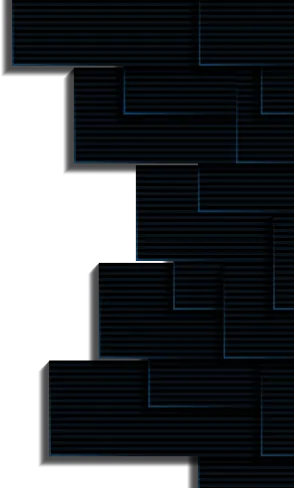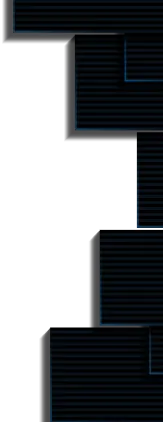What is Near Protocol?
Chahat

The cryptocurrency sector is still in an active growth stage and is far from complete acceptance — today, there are still barriers to mass adoption, such as a difficult user experience, blockchain complexity, and other things that are not easily comprehended by the average user.
The NEAR Protocol project, which has captured a substantial chunk of the crypto market’s interest, should alleviate all of these issues.
The NEAR Protocol is a decentralized development platform where developers may host serverless apps and smart contracts that easily link to open financial networks and benefit from an ecosystem of open web components.
Unlike other blockchain-based platforms, NEAR Protocol is designed from the bottom up to be the most user-friendly in the world for developers and their end users, while still delivering the scalability and security required to service those customers. NEAR, in particular, is intended to make it simpler to:
- Create decentralized apps even if you’re just familiar with “conventional” web or app ideas.
- Provide a seamless user experience, even if they have never utilized cryptocurrency, tokens, keys, wallets, or other blockchain artefacts.
- Scale your application with ease: the underlying infrastructure automatically grows capacity through sharding, with no additional fees or work on your side.
Tokens and tokenized assets are used in Open Finance networks to allow digital value transmission and storage. This includes anything from simple peer-to-peer payments to complex lending and trading systems.
Open Web components are reusable smart contracts that share state, allowing for easy application composability while still protecting users’ data. Whereas Open Finance is based on the unrestricted flow of wealth, the Open Web extends this openness to include all data.
How does the Near protocol work?
Blockchain is a technology that allows transaction records to be safely stored on a peer-to-peer network rather than in a single location. The network that runs the blockchain is made up of independent machines located all around the world, known as nodes.
Decentralization is one of the most distinguishing features of blockchain technology. So, why is decentralization advantageous? Consider it from the standpoints of developers and end users.
Developers: In a centralized society, developers are frequently at the mercy of cloud platforms or even the government to ensure that their programs can continue to function. There are no tyrannical middlemen in a decentralized world.
End Users: The openness of decentralized applications allows consumers to examine the backend code and understand exactly how the apps will utilize their personal information.
NEAR Protocol supports sharding, although its technique differs somewhat from that of other blockchain systems like as Polkadot. All shards are regarded as part of the same blockchain on the NEAR platform. This is all due to a process known as Nightshade. Only a snapshot of each shard’s current state is uploaded to the blockchain via Nightshade. Each shard has its own set of validator nodes, which broadcast the status of the shard whenever a block is generated. In other words, shard operation may be viewed as an intersection. Each road is a segment of an NEAR blockchain, and the intersection itself is an NEAR blockchain. Furthermore, because the transactions do not overlap, shards on NEAR can run in simultaneously. This substantially increases the platform’s overall efficiency.
Another critical component of the NEAR Protocol is a technique known as Doomslug. It enables validator nodes to generate blocks in turn. This occurs once per “epoch” and lasts 12 hours. At the same time, each new block takes roughly a second to create. The block reward is given through inflation, which is presently at 5% each year. 90% of each block reward is distributed to pools of validators and delegates, with the remaining 10% going to NEAR, which is currently administered by the NEAR Foundation.
Why use Near protocol?
NEAR Protocol is a next-generation blockchain protocol that allows developers to quickly create decentralized apps (dApps) with minimum effort. NEAR Protocol has created a smart contract-enabled blockchain that allows the construction of community-based dApps using unique consensus methods and sharding protocols.
Thresholded Proof-of-Stake is a Proof-of-Stake election method used by the NEAR Protocol (TPoS). The concept behind this approach is that a planned method of creating a large number of participants who maintain the network would improve decentralization and security while also creating a fair reward distribution system. There will be far less forking in a TPoS network with witnesses, such as NEAR’s. When there is a severe network split and less than one-third of adversaries are present, forks are conceivable. However, in NEAR, a minority of network users will notice blocks with fewer than half of the signatures, providing immediate and unambiguous indication that the network may be divided. Second, because the reward is precisely proportionate to the stake, there is no need to pool stake or computing resources. Finally, the security is improved. This is because an attack is difficult to carry out because you would require the private keys from witnesses who have two-thirds of the total stake amount
What are the projects which are based on NEAR?
NEAR Protocol has garnered a lot of interest both inside and outside of the cryptocurrency sector in its more than two years of existence. During this period, the NEAR ecosystem has grown rapidly, and many new and intriguing initiatives have joined it.
- The Flux Protocol
Flux develops the easiest protocol for developers to establish markets on virtually anything. Part of that aim is to develop an open source application for open markets that is creative, easy, and flexible. The NEAR Wallet serves as the foundation for the Flux open source program. NEAR Wallet is a non-custodial wallet in the form of a browser extension that allows account names for addresses, making it easier and more familiar to web2 users. - Mintbase
It is a marketplace similar to Amazon. It enables any user, including those with little technical knowledge, to develop and distribute their own unique digital goods via their smart contract. The typical price for engaging with smart contracts can sometimes approach the double digits. Due to these drawbacks, the Mintbase team sought out an alternate platform and discovered NEAR Protocol. - Paras
Paras is an NFT marketplace that focuses on digital collectibles. They thrive upon bringing conventional collectibles to crypto space. They started with digital art cards that were inspired by real-world trading cards that have been bulletproof and forever lasting since they were introduced back in the 80s. They believe that every single physical art form needs to be stored and digitized to keep it future-proof.
What is the Near Token?
The NEAR token is the NEAR ecosystem’s primary native asset, and its functionality is available to all accounts. Each token is a distinct digital asset, similar to Ether, that can be used to:
- Pay the system for transaction processing and data storage.
- Participate in the staking process by running a validating node as part of the network.
- Participating in governance procedures allows you to influence how network resources are distributed and where the network’s technological direction will go in the future.
The NEAR token enables the economic coordination of all network members, as well as novel behaviors among apps developed on top of the network.
Near FAQs
- How fast is Near protocol?
NEAR is indeed fast. It can handle up to 100,000 transactions per second (tps) and reaches transaction finality almost immediately owing to a 1-second block cadence. According to NEAR, its technology allows it could achieve transaction fees that are 10,000 times cheaper than those on Ethereum — effectively insignificant. - Is Near Protocol a Layer 2?
NEAR is an example of a gen-3 blockchain, which aims to overcome scalability difficulties and allow both end-users and developers to fully utilize smart contracts and blockchain technology. Instead of depending on layer-2 technology, NEAR rejects the notion that every node in the network must run all of the code, as this creates a single large inefficient bottleneck that slows down all other alternatives.
To address this issue, NEAR employs a method that is already widely used in the database world: sharding. - Who is building on Near Protocol?
NEAR Inc. was responsible for most of the protocol’s early development and tools. A software research and development firm based in the United States that was involved for much of the protocol’s early development and tooling. While NEAR Inc does not control or operate the NEAR Protocol (which is decentralized), it continues to propose improvements to the reference implementation codebase as one of several third-party companies doing protocol R&D.
Resources
https://docs.near.org/docs/concepts/new-to-near
https://near.org/
https://near.academy/near101/chapter-3





Subscribe to receive Alpha!
Join 4.3k subscribers from renowned companies worldwide and get a weekly update in your inbox. Stay updated on the latest and finest projects and product updates.

